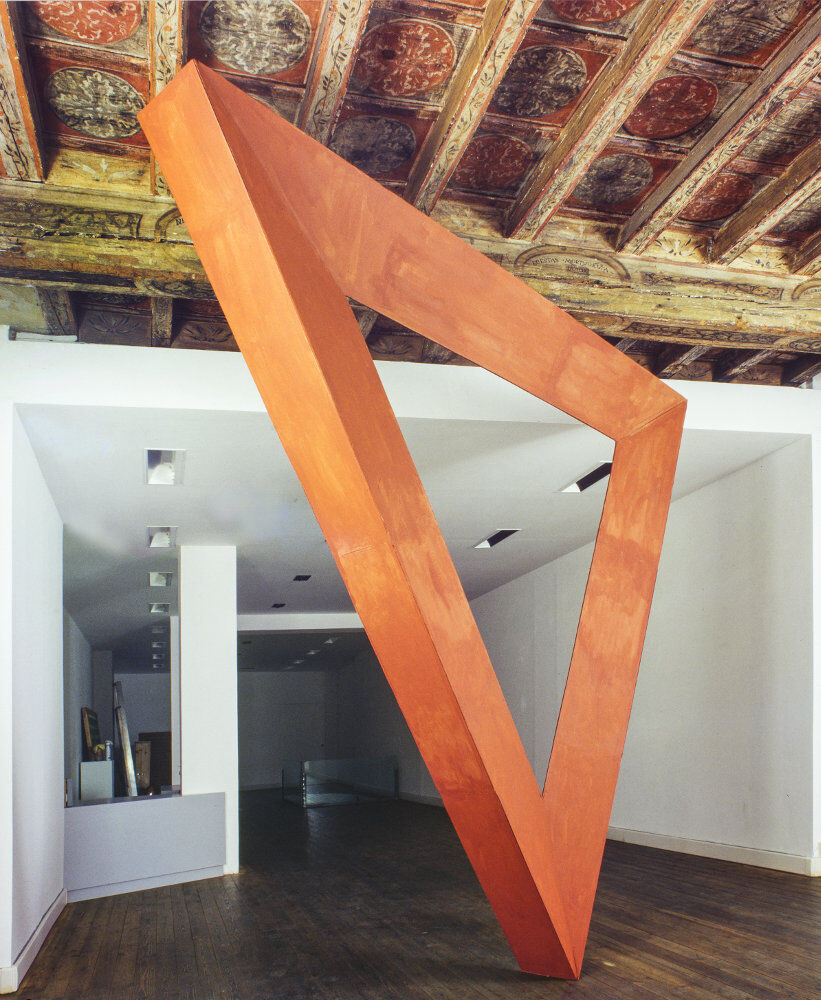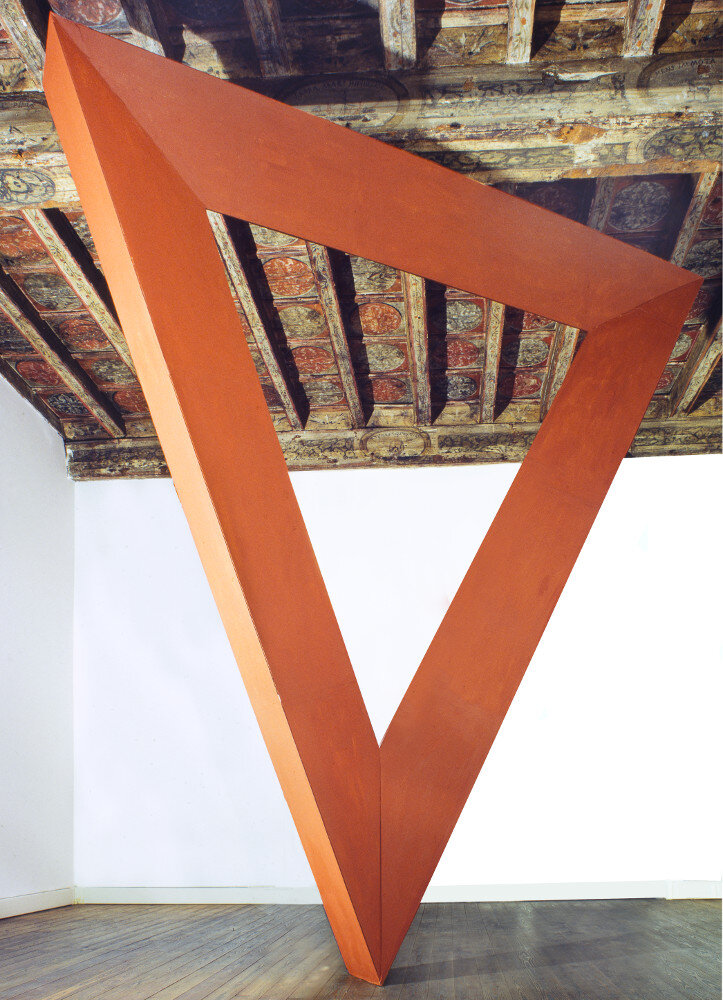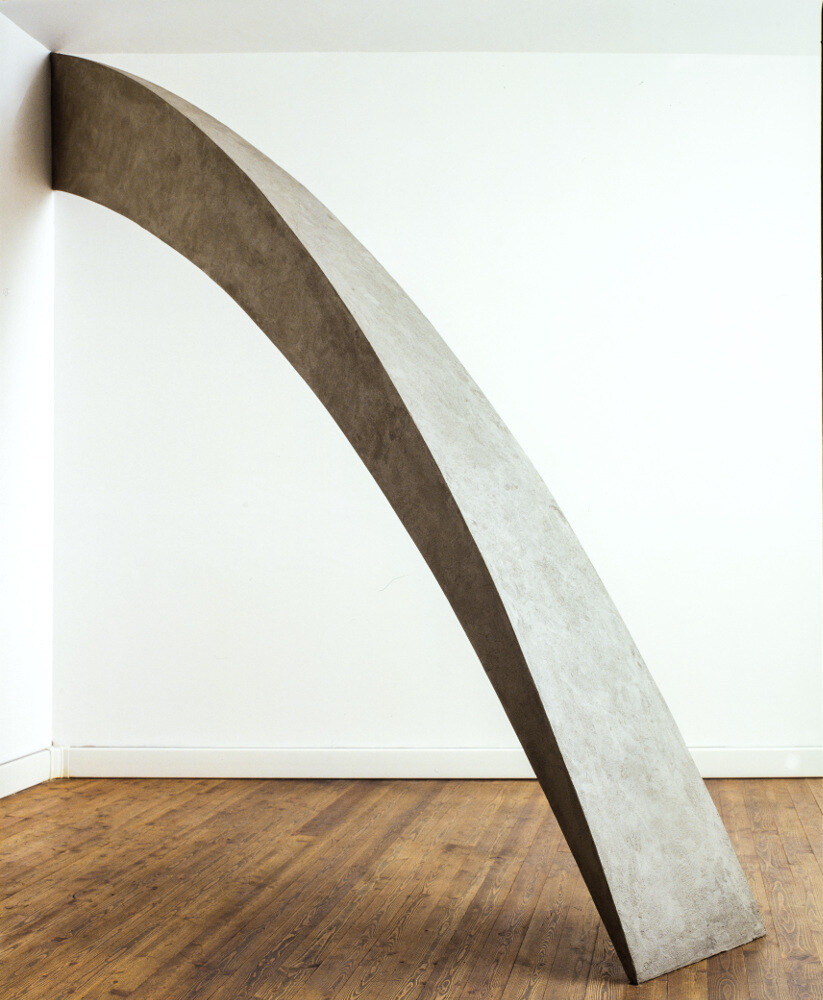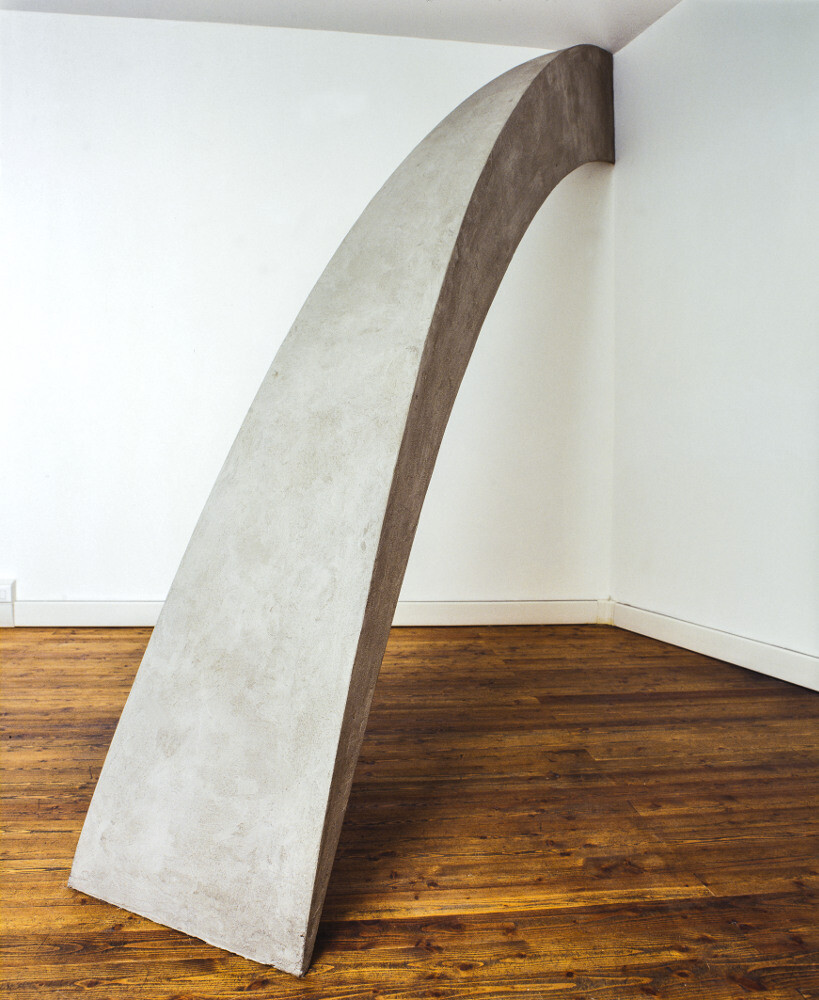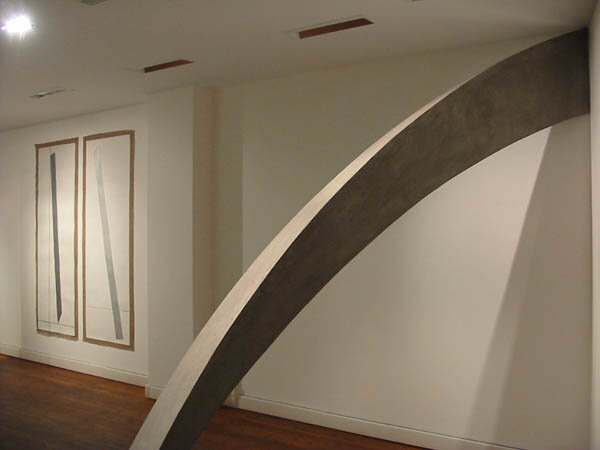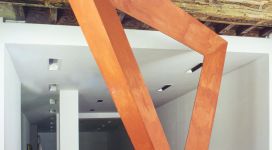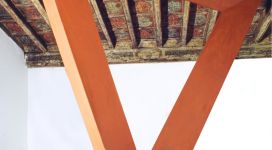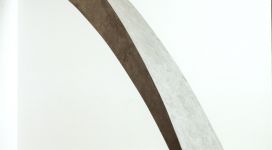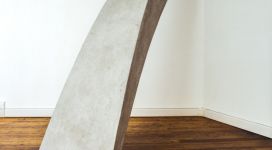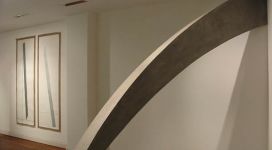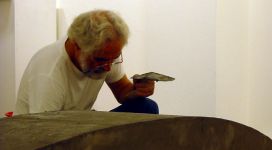| MAURO STACCIOLI | Biography | |
| Sculture e progetti | Catalogs | |
| curated by ANDREA ALIBRANDI | ||
| 2 october – 27 november 2004 |
Mauro Staccioli designed two wooden and concrete sculptures for the gallery, making them on site: the first, Firenze 2004, situated at the entrance, competed with the old decorated ceiling; the second, Uguale e contrario, was positioned as a counterfort in the end part of the room. Alongside the two site-specific sculptures was a group of large drawings from the 1990s onwards and some small sculptures.
“My past and present experiences lead me to rethink, reflect on my personal artistic career and my mind has turned increasingly often to the cultural history of my homeland. From far off I think of my homeland very often, I revisit things and places… rethink the stages that have shaped me, and the history of my country. When I answer the questions of students from a university in Seoul or Taiwan, Los Angeles, San Francisco or, recently, Puerto Rico, I am “forced” to reconsider the grounds generating my work: where do they lie? where do they come from? how do my sculptures come into being? At present I would answer that this work belongs to experiences in my personal life that settled long ago. Time has always been present in my works: space is acted, there is evident reference to the time of history but also to the time of crossing. Here in Florence, I openly declare that the history within which my “contextual mark” lies is also a personal history.
In this work in Florence, the triangular sculpture acts on the place while taking on the city’s historic and cultural depth, balances, measures and morphologies. The sculpture becomes a “place of thought”, elaboration of shape, where the relationship with the work becomes a measurement of thought as to our being and staying in the place (in the world). Sculpture becomes thought.
What I try to grasp, in the place where the sculpture is situated, is the history of the place itself. Therefore, the sculpture takes on the sense of a germinal architecture in which the elements making it up refer to the grounds of thought and remembering time, especially here in Florence, where I thought of the place as generating experience, and thus thought and reflection on being and staying in the place, with all that this gives rise to.
In this period the stages that have made up my career are becoming evident. With the passing of time they are becoming more and more obvious. The landscape, the places of the Middle Ages rather than the Renaissance: the landscape of measurement – body measurement – comes out to all effects in the Renaissance, but the Middle Ages were the moment in history in which our society came up with those social, cultural and political forms that have come down to us. I’m thinking of the era of the communes, with their town halls, market loggias, the organisation of farming…
I find the order given to fields evident in my work, but that’s not all. Nevertheless, I am working to rediscover an aesthetic dimension, a regeneration of the order and shape of doing that can highlight a recognisable order of being together and living; a dimension that lies in the need to rediscover the ethical sense of the relationship between us and places. Sculpture can contribute to that new Gramscian order that we feel the need for.
In my most recent works in this period I think I have taken a step in the direction of researching the problems of our modernity: working on reorganising the sense of sculpture so it can rediscover its reason for being a sign and place.”
Mauro Staccioli, Firenze 2004 (text from catalogue), Edizioni il Ponte, Florence 2004
